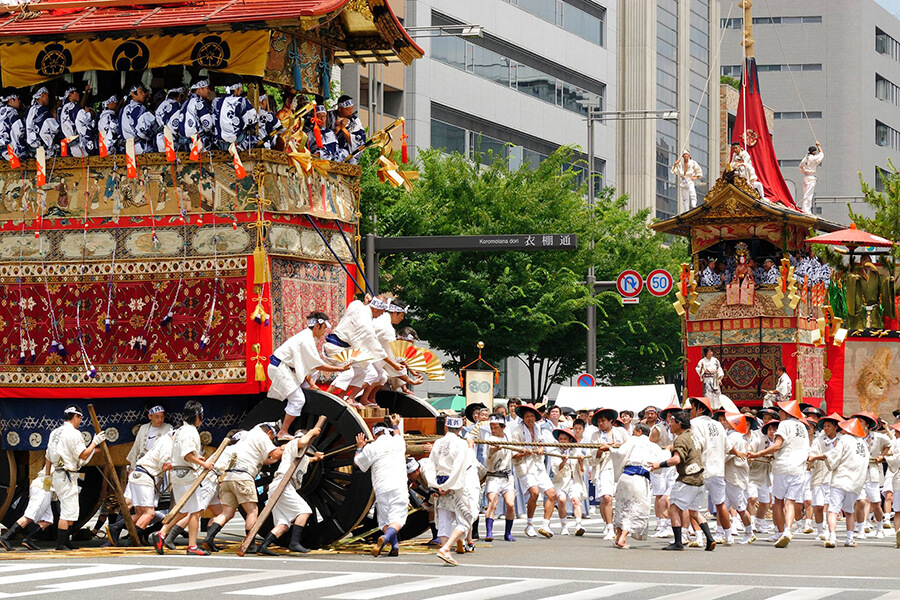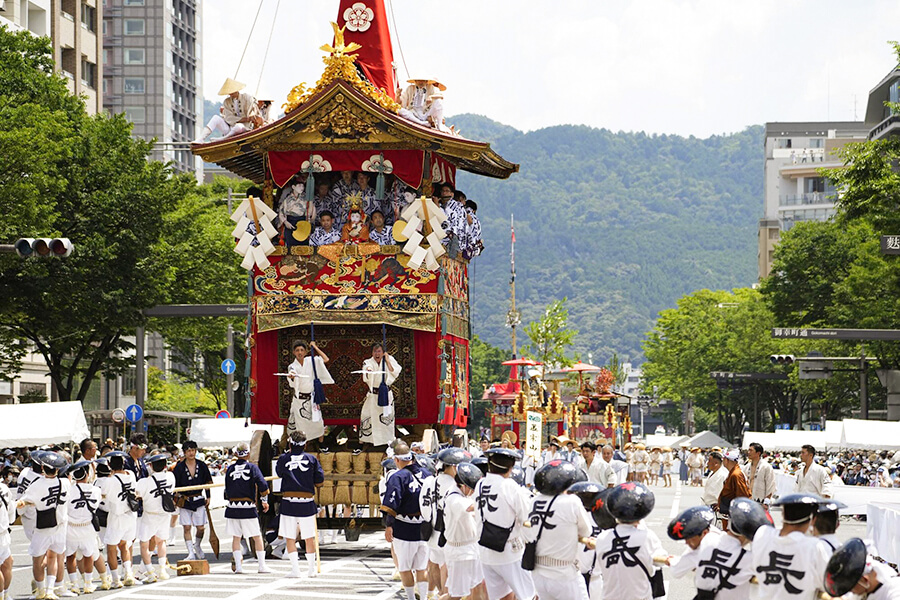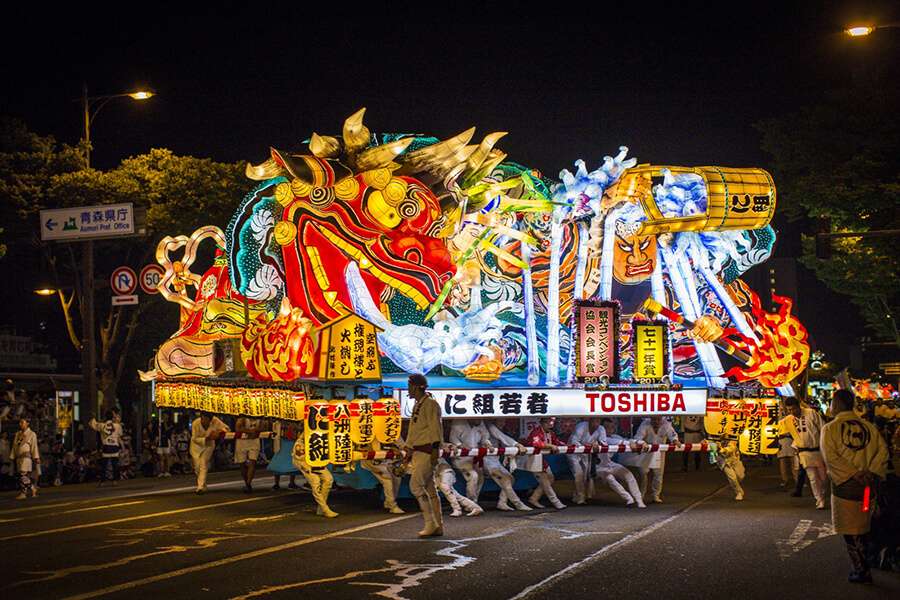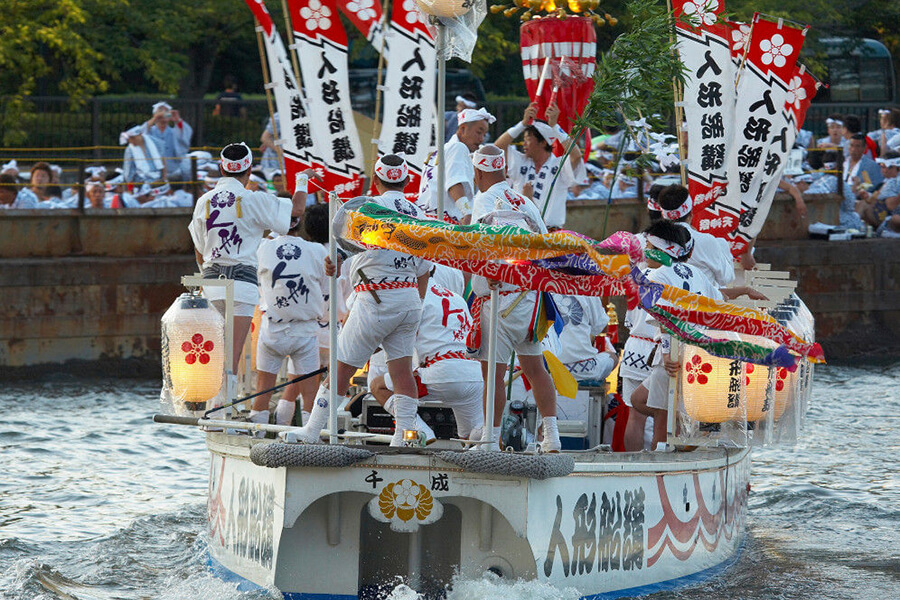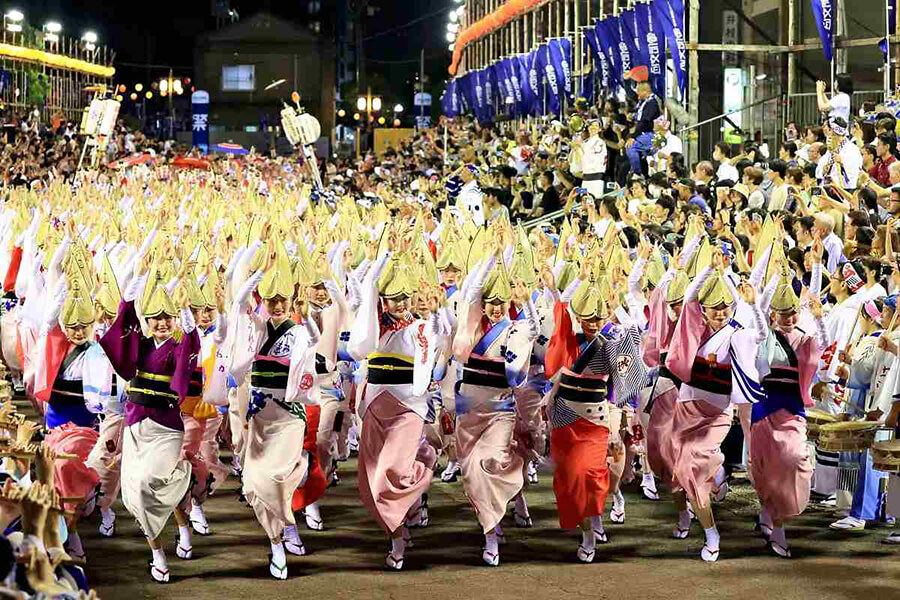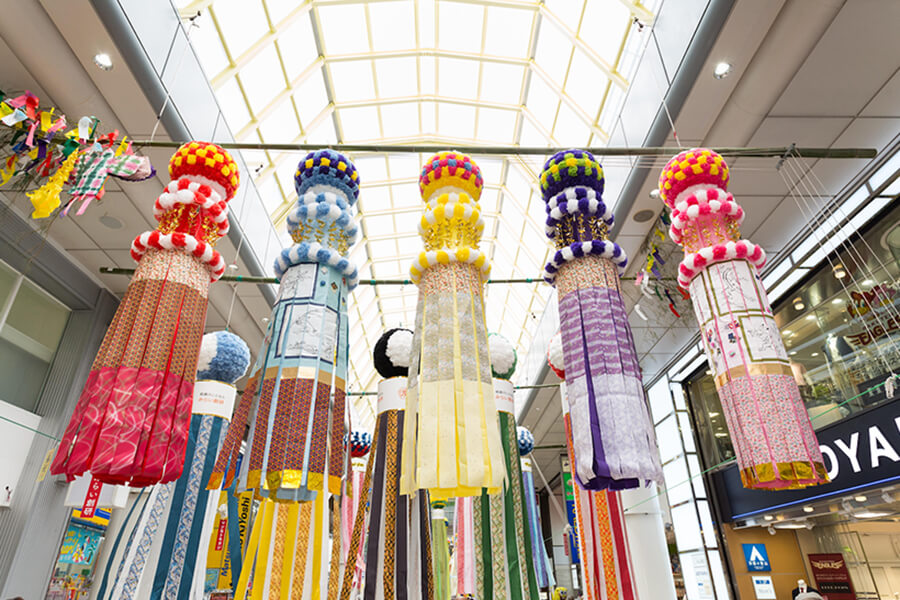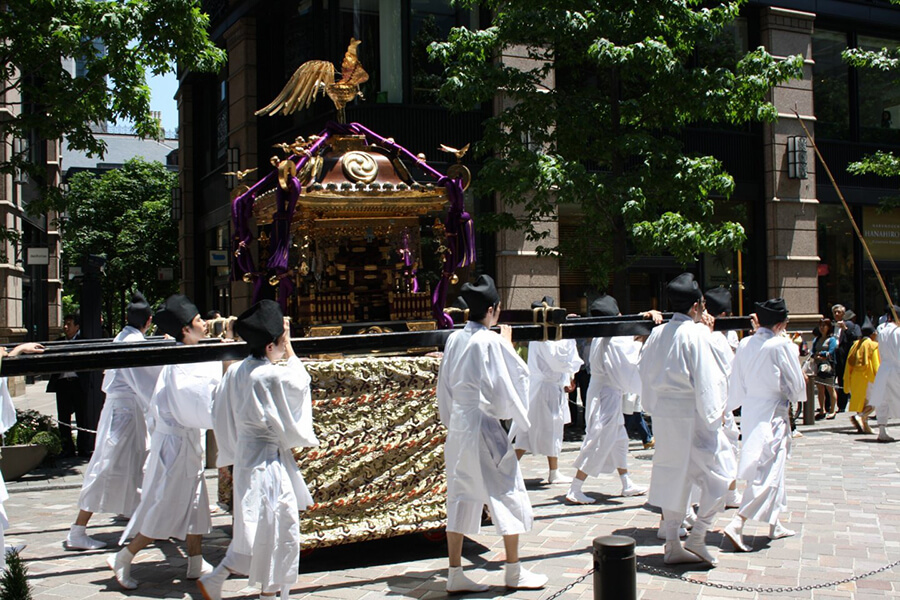While Japanese summers can be quite warm, the vibrant festivals held during this time make it worth visiting. Summer in Japan coincides with the Obon period, observed in July and August. According to local legends, this is when the spirits of ancestors return to the earth, and many traditional festivals are held in their honor.
When you attend a Japan summer festival, you'll experience a strong focus on the spiritual realm. Expect to see deity-shaped floats parading through the streets, mobile shrines appearing at key locations, and energetic traditional dance performances. Every aspect of these festivals is designed to pay respect to ancestors.
The lively atmosphere and unique cultural experience make Japanese summer festivals a must-see. To fully immerse yourself, participate in the dances, join the parades, and chant with the crowds. It's also a great opportunity to interact with locals.
Highlights of Japan Summer Festivals
Japan summer festivals, or Matsuri, are deeply rooted in tradition, often centered around honoring a shrine's deity, commemorating significant events, or celebrating the changing seasons. At a traditional Matsuri, you can expect processions featuring floats, with the shrine's portable representation of the deity (Kami) being carried along the route. Live music, particularly drums and flutes, often accompanies the processions, with additional musicians joining in as well. Each festival varies in character, depending on the region.
Some festivals are calm and peaceful, while others are vibrant and energetic. Regardless of the vibe, most include singing, dancing, and plenty of festive activities. During summer, you'll find bright decorations, delicious food, games, and fireworks at these events.
The Best Japan Summer Festivals
If you're visiting Japan in the summer, you're in for a treat. This guide highlights some of the best festivals, which are not only fun but also provide a deeper understanding of Japanese culture, history, and traditions.
Gion Matsuri - Japan's Most Famous Festival
Gion Matsuri is Japan's most renowned festival, lighting up Kyoto each July. The festival takes over downtown Kyoto for the entire month, featuring parades with elaborate floats, lively street parties, and an array of festival food.
This legendary event dates back to 869, when Emperor Seiwa held a celebration to honor the gods, hoping to protect Kyoto from the plague. Its long history contributes to its impressive nature. The main parade, Yamaboko Junko, is so significant that it has been registered as a UNESCO Intangible Cultural Heritage of Humanity.
The main processions take place over two days in the morning, with three festive evenings leading up to them. During these evenings, downtown Kyoto streets are closed to traffic to accommodate the revelers. Additionally, smaller events occur before and between the main processions.
Nebuta Matsuri - The Lantern Float Festival
Nebuta Matsuri, held in Aomori City in early August, is the largest festival in the Aomori prefecture. The highlight of this week-long celebration is the nightly parade of giant lantern floats, accompanied by taiko drums, musicians, and dancers. These impressive floats can be up to 9 meters tall and 5 meters wide, depicting gods, historical heroes, mythical creatures, or popular characters from local shows.
The parades take place every night in downtown Aomori City, except for the final day when the parade is held in the afternoon, followed by a fireworks show. Participation in the parade is encouraged, but be sure to purchase a traditional haneto dancing costume, available at grocery stores, as it's required for all participants. It's an unforgettable experience on Aomori shore excursions that captures the essence of summer festivals in Japan.
Tenjin Matsuri - The River Procession with Fireworks Festival
Tenjin Matsuri, held in Osaka in late July, may not be as long as other festivals, but it makes up for it with a grand spectacle on Osaka shore excursions. The first day serves as a warm-up, with the main event taking place on the second day, featuring both land and river processions, capped off with a fireworks show.
Like many other Japan summer festivals, Tenjin Matsuri has a rich history, dating back to the 10th century. It honors the main deity, Sugawara Michizane, of the Tenmangu shrine. The festival begins with a ceremonial ritual and prayers by the river on the first day.
On the second day, the festivities kick off with a land procession led by drummers wearing red hats, traditional characters in costume, lion and umbrella dancers, and festive music. The shrine is carried along the procession, which then continues on boats along the Okawa River, ending with a spectacular fireworks display.
Awa Odori - Obon Dancing Festival
Awa Odori, held in Tokushima during the Obon period in mid-August, is one of the most popular summer festivals in Japan. "Awa" was the original name for Tokushima, and "Odori" means dance. From August 12 to 15, spectators flock to Tokushima to witness or participate in the event.
During the festival, downtown Tokushima roads are closed to traffic, and groups of dancers (Ren) perform specific dances accompanied by musicians playing traditional instruments. Both amateur and professional dancers can join, with the latter standing out due to their advanced choreography and colorful uniforms.
While some dances occur during the afternoons, most take place at night, turning the city center into a massive stage. The main attraction is the "Fool's Dance," which dates back to the 10th century. The festival also features street food, game stalls, parades, and more.
Tanabata Matsuri - An Elaborate Star Festival
Sendai hosts Japan's largest and most famous Tanabata festival, also known as the "star festival," from August 6 to 8. Tanabata festivals celebrate the crossing of two stars (Altair and Vega) according to a Chinese legend, with dates varying between July and August due to calendar differences.
The Sendai Tanabata Matsuri is known for its thousands of colorful streamers that adorn the city's shopping centers, creating a visual spectacle. Besides the streamers, other items representing wishes for the city and its people are displayed throughout Sendai. The festival also features performances, live music, traditional dancing, food stalls, and a fireworks show on the night before the official start.
Sanno Matsuri - A Great Edo Festival
Sanno Matsuri is one of Tokyo's three biggest summer festivals. The full version occurs only on even-numbered years, while a partial version takes place on odd-numbered years, alternating with the Kanda Matsuri festival.
Held over 11 days in mid-June, Sanno Matsuri features various small events across Tokyo. During even-numbered years, the main attraction is a grand parade that winds through central Tokyo for about 9 hours. The festival honors the deity at the Hie shrine, believed to be the guardian god of Tokyo.
Although the scale of the procession has been reduced over time to avoid road closures in Tokyo's busy streets, many streets are partially closed on parade day to accommodate the floats, musicians, and dancers. At the Hie shrine, participants can walk through a large straw ring as an act of purification.
Japan offers an array of adventures, culinary delights, and natural wonders, but participating in a Japanese summer festival through Japan Shore Excursions provides a deeper connection to the country. With rich historical and cultural roots, these festivals are integral to Japanese national identity. We hope that taking part in one of these festivals will enhance your understanding of Japan and make your trip truly memorable.

